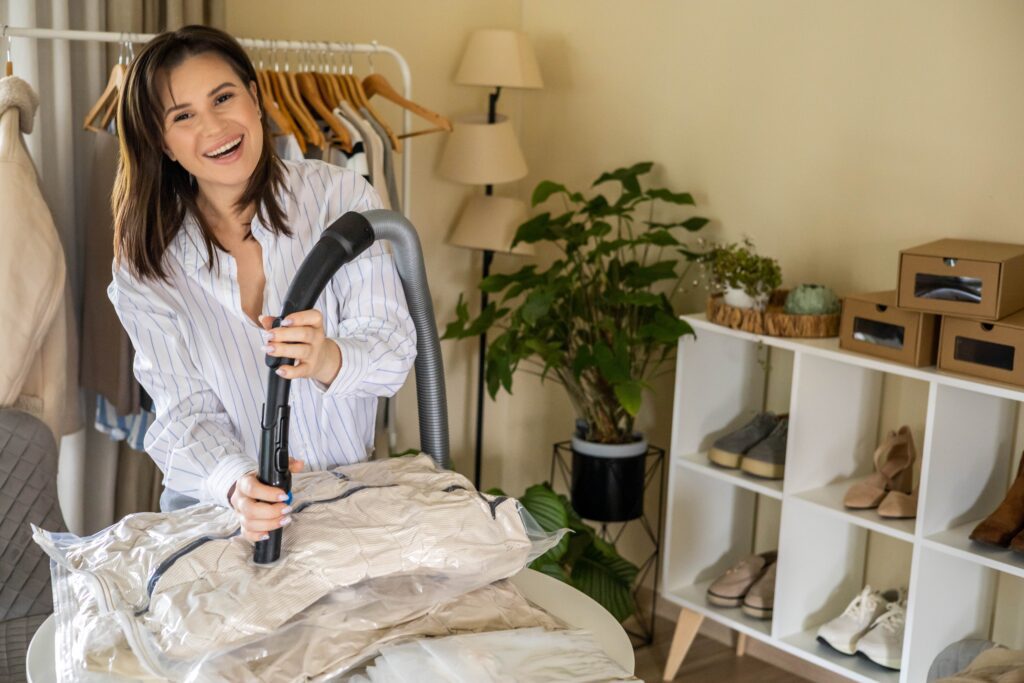Seasonal Clothing Storage Tips: Transitioning Wardrobes with Self-Storage Solutions
How to Transition Your Wardrobe with Seasonal Clothing Storage Solutions
As the seasons change, so do our wardrobe needs. Transitioning between summer and winter clothing can be a daunting task, especially if you have limited closet space or storage options. However, with the right approach and organization strategies, you can make the seasonal clothing rotation process smooth and efficient. In this guide, we’ll explore seasonal clothing storage tips and how self storage solutions can help you transition your wardrobes effectively and maximize your closet space.
Evaluate Your Wardrobe
Before embarking on the seasonal clothing rotation process, take the time to assess your wardrobe and evaluate which items you’ll need for the upcoming season and which ones you can pack away for storage. Sort through your clothing, shoes, and accessories and separate them into categories such as summer, winter, and year-round essentials.
Consider factors such as climate, lifestyle, and upcoming events or occasions when selecting clothing items to keep in your current rotation and ones to store for the season. Donate or sell any items that no longer fit, suit your style, or serve a purpose in your wardrobe to declutter and make room for new additions.
Inspect each clothing item for signs of wear, damage, or stains, and launder or dry clean them as needed before storing them away for the season. Repair or mend any loose buttons, frayed seams, or missing fasteners to ensure that your clothing remains in good condition while in storage and ready to wear when you need them next.
Declutter and Purge
As you transition between seasons, use the opportunity to declutter and purge your wardrobe of items that no longer serve you or bring you joy. Take a minimalist approach and keep only the clothing items that you love, wear regularly, and align with your personal style and values.
Sort through your clothing collection and identify items that you haven’t worn in the past year, no longer fit, or are outdated or damaged beyond repair. Donate gently used clothing to charity organizations or clothing drives, sell items in good condition at consignment shops or online marketplaces, and recycle or repurpose old or worn-out textiles to minimize waste.
Be ruthless in your decluttering efforts and let go of clothing items that no longer serve a purpose or bring you happiness, even if they have sentimental value or memories attached to them. Embrace the concept of capsule wardrobes and focus on quality over quantity by curating a curated collection of versatile, timeless pieces that can be mixed and matched for different looks and occasions.
Streamline your wardrobe by investing in multi-functional clothing items such as reversible jackets, convertible pants, or interchangeable accessories that offer versatility and flexibility for different seasons, climates, and activities. Choose high-quality, durable fabrics and timeless designs that withstand the test of time and transcend seasonal trends.
Optimize Your Storage Space
Once you’ve decluttered and purged your wardrobe, it’s time to organize your storage space and prepare it for seasonal clothing rotation. Assess your existing storage options such as closets, drawers, and shelves, and determine how much space you’ll need to store seasonal clothing items that are not in current rotation.
Maximize closet space by utilizing vertical storage solutions such as shelves, hooks, or hanging organizers to store folded clothing, shoes, and accessories. Use storage bins, baskets, or vacuum-sealed bags to store off-season clothing items such as sweaters, coats, and boots under the bed, in the attic, or in a designated storage area.
Invest in space-saving storage solutions such as garment racks, rolling racks, or wardrobe closets to supplement existing closet space and provide additional storage for seasonal clothing items. These portable storage solutions can be easily assembled and disassembled as needed and offer flexibility and convenience for storing and accessing clothing items.
Label storage containers, bins, or boxes with the contents and season to make it easy to identify and locate specific items when you need them next. Use clear plastic bins or transparent storage bags to store clothing items so you can easily see what’s inside without having to open or unpack them.
Take Advantage of Self Storage Solutions
If you’re short on closet space or have a large wardrobe collection that exceeds your home storage capacity, consider renting a self storage unit to store seasonal clothing items and free up space in your home. Self storage units offer a convenient and cost-effective solution for storing clothing, shoes, and accessories that are not in current rotation and allow you to access them whenever you need them.
Choose a self storage facility that offers climate-controlled units to protect your clothing items from temperature fluctuations, humidity, and moisture that can cause damage or deterioration over time. Climate-controlled storage units maintain stable temperature and humidity levels year-round, ensuring that your clothing remains in optimal condition while in storage.
Select a storage unit size that accommodates your wardrobe storage needs and offers enough space to store clothing racks, shelves, or storage containers without overcrowding or damaging your items. Consider factors such as accessibility, security, and amenities when choosing a self storage facility and opt for one that offers 24/7 access, surveillance cameras, and secure locks for added peace of mind.
Organize your self storage unit strategically by grouping similar items together and storing them in labeled containers, bins, or boxes to facilitate easy retrieval and access. Use garment bags or garment boxes to protect delicate or formal clothing items such as dresses, suits, or evening gowns from dust, wrinkles, or damage while in storage.
Final Thoughts: Embrace Seasonal Transitions with Confidence
Seasonal clothing rotation is a necessary part of maintaining an organized and functional wardrobe, allowing you to optimize your closet space and keep your clothing collection fresh and relevant year-round. By following these seasonal clothing storage tips and utilizing self storage solutions, you can streamline the transition process, maximize your storage space, and ensure that your clothing remains in optimal condition while in storage. With proper organization and storage strategies, you’ll be able to enjoy a clutter-free and efficient wardrobe that reflects your personal style and lifestyle needs.





